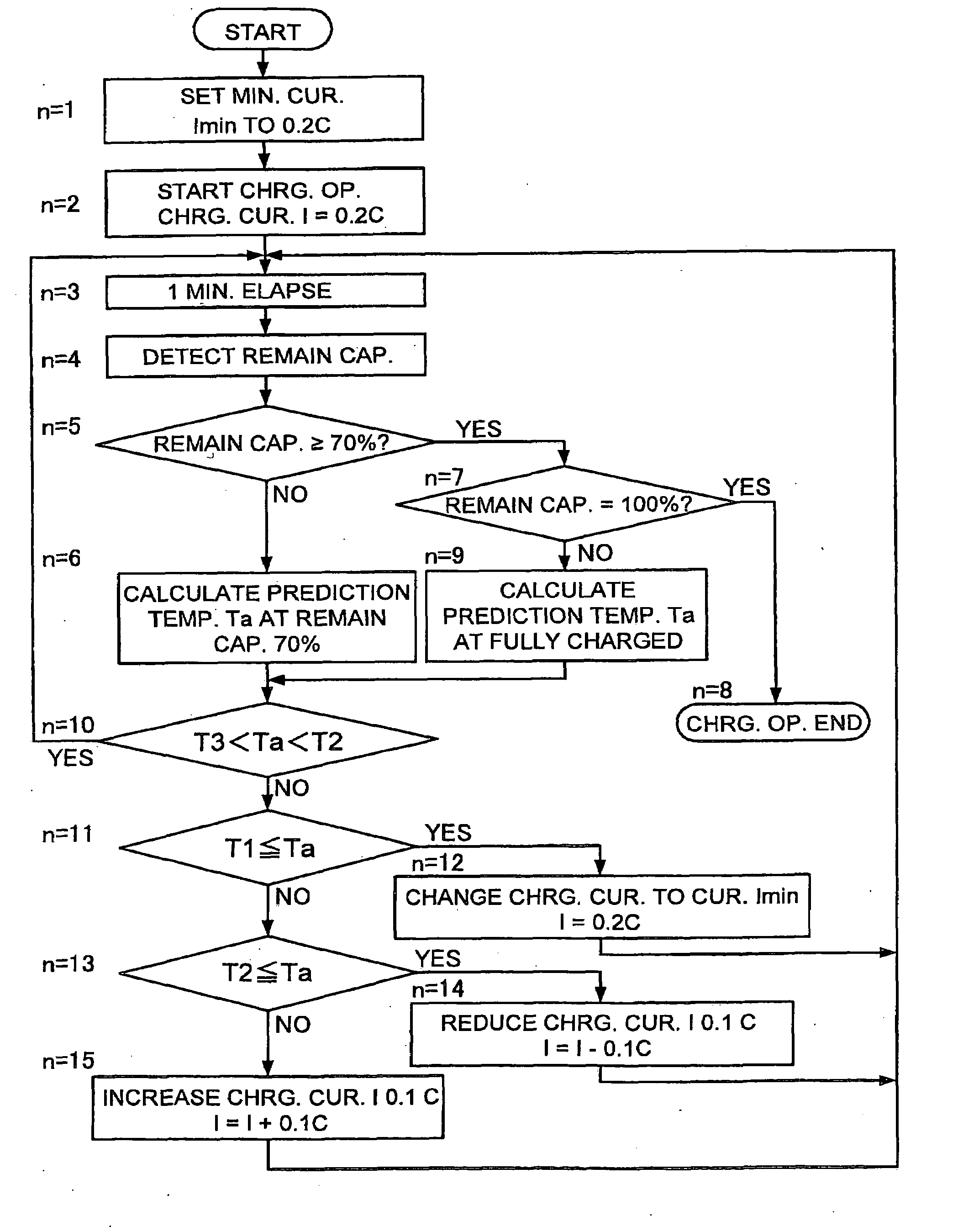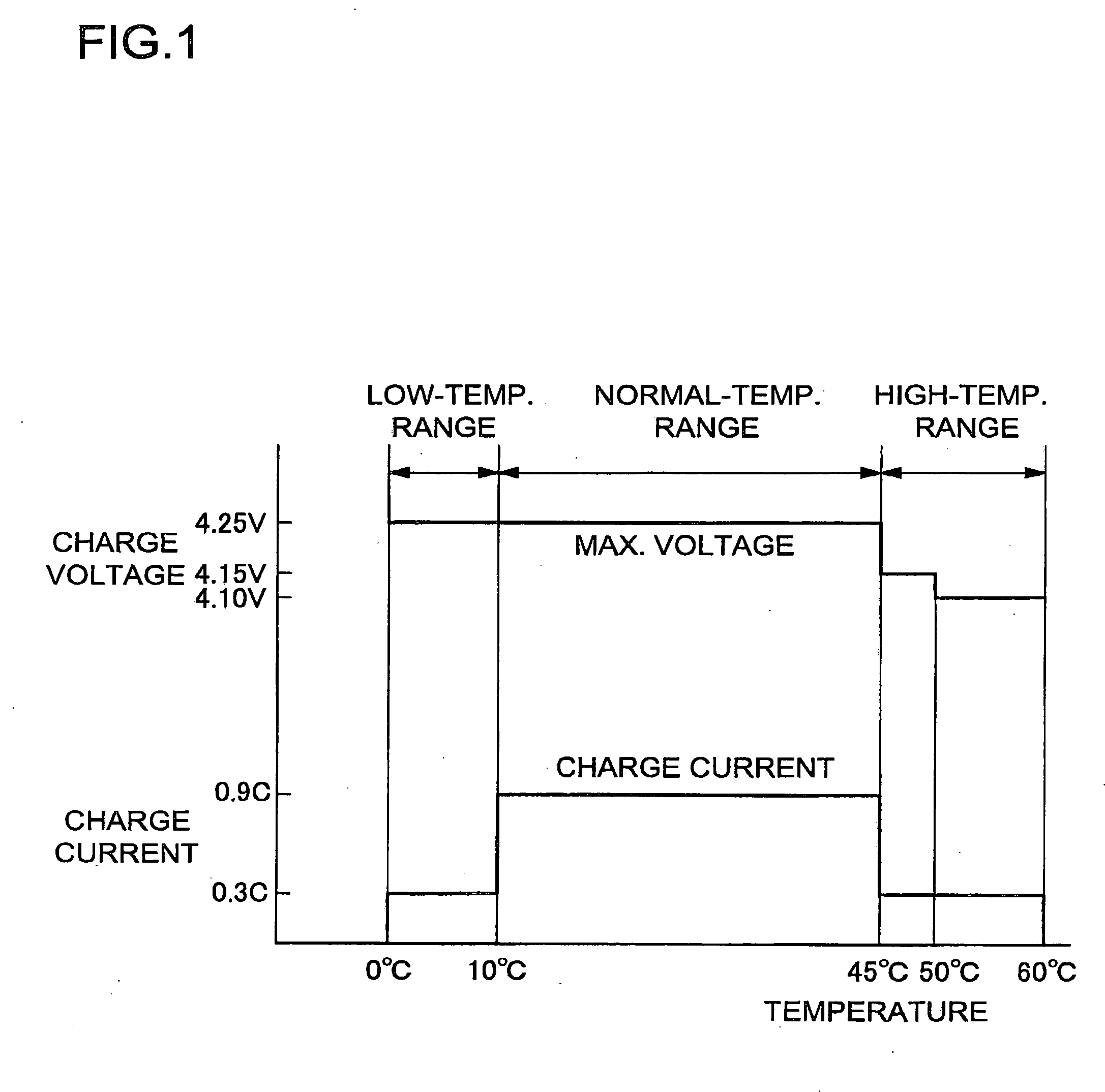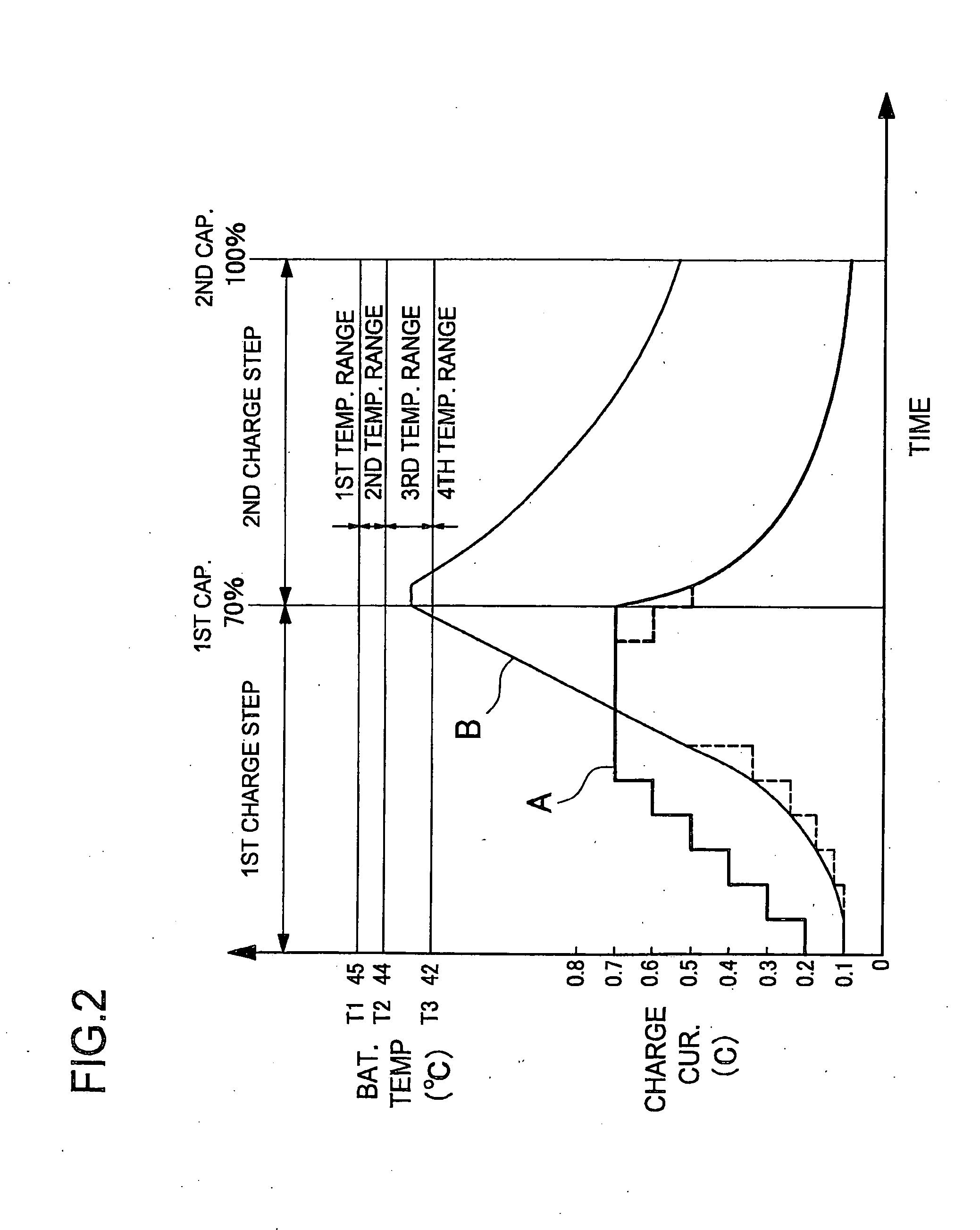Charging method
a rechargeable battery and lithium-ion technology, applied in electric power, electric vehicles, transportation and packaging, etc., can solve the problems of high manufacturing cost, high noise level of fan or the like that cools the battery, and is likely to cause trouble, so as to prevent the temperature rise of lithium-ion rechargeable batteries, short time, and fully charged
- Summary
- Abstract
- Description
- Claims
- Application Information
AI Technical Summary
Benefits of technology
Problems solved by technology
Method used
Image
Examples
Embodiment Construction
)
[0024]FIG. 3 is a circuit diagram of a battery pack 10 that is charged in a charging method according to the present invention. The battery pack 10 is attached to a charger unit 20, and is charged by a charging circuit 21 of a charger unit 20. The battery pack 10 includes an arithmetic circuit 12 that detects a voltage and a temperature of a battery 11, and controls a current of the battery 11 based on the detected voltage and temperature. The battery 11 is composed of a lithium-ion rechargeable battery. The charging circuit 21 of the charger unit 20 includes a constant-voltage and constant-current power supply 22, and a current regulating circuit 23 that controls a charging current of the battery that is provided from this constant-voltage and constant-current power supply 22. The current regulating circuit 23 controls a charging current of the battery to fully charge the battery 11 based on a control signal that is provided from the arithmetic circuit 12 of the battery pack 10.
[0...
PUM
 Login to View More
Login to View More Abstract
Description
Claims
Application Information
 Login to View More
Login to View More - R&D
- Intellectual Property
- Life Sciences
- Materials
- Tech Scout
- Unparalleled Data Quality
- Higher Quality Content
- 60% Fewer Hallucinations
Browse by: Latest US Patents, China's latest patents, Technical Efficacy Thesaurus, Application Domain, Technology Topic, Popular Technical Reports.
© 2025 PatSnap. All rights reserved.Legal|Privacy policy|Modern Slavery Act Transparency Statement|Sitemap|About US| Contact US: help@patsnap.com



